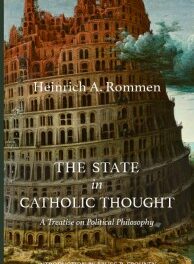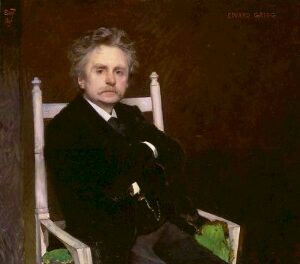We support our Publishers and Content Creators. You can view this story on their website by CLICKING HERE.
Gustav Mahler’s Fourth Symphony is his most sheerly delightful and accessible creation. It is written on a human scale and brings us on a clear and cogent musical and emotional journey. What’s more, this relatively traditional work still shows many of the ways in which Mahler was one of the most original and inventive composers of all time.
Speaking of his favored musical genre, Gustav Mahler (1860–1911) famously wrote that “the symphony must be like the world. It must embrace everything.” Mahler is surely one of the most fascinating composers in the classical canon, and his nine completed symphonies (with an unfinished tenth) are staples of the orchestral repertoire. Considered strange and extreme during his lifetime, they have steadily grown in esteem since the mid-20th century, when conductors like Leonard Bernstein began championing this composer’s complex and intensely personal music. Of all the symphonies, the Fourth, in G major, first performed in 1901, ranks as the most popular. It’s not hard to see why. The Fourth is, in the words of one critic, Mahler’s “gentlest, sunniest, and most affirmative work,” his most sheerly delightful and accessible creation. It is written on a human scale, lasting just under an hour—short by Mahler’s standards—and brings us on a clear and cogent musical and emotional journey. What’s more, this relatively traditional work still shows many of the ways in which Mahler was one of the most original and inventive composers of all time.
True to his principle, each of Mahler’s symphonies embodies a unique expressive world, tells a different story. And what is Fourth “about”—what world does it describe? The magical opening of the first movement, with staccato flutes and sleigh bells, brings us immediately into an innocent and idyllic world of childhood. Later on, we hear themes that sound like children’s songs and games. Mahler sweeps us along a current of beautiful tunes, one after the other. Darker notes enter in the development section, when Mahler polyphonically piles up all of the themes with increasingly dissonant effect. It’s as if the children have become lost in an ominous forest. The discordant climax cuts off—then returns to the innocent music of the opening. The second movement is a macabre scherzo in which a detuned violin solo portrays Death as a skeleton scratching on a fiddle. Already the symphony offers plenty of variety.
As mentioned, this is Mahler’s shortest symphony; but it’s not mere brevity that is the point here. The Fourth maintains a sense of classical proportion not always present in Mahler’s other long, sprawling works. Thanks to the memorable themes and cohesive development, there is never any doubt where this music is going. And it all ends up transcendently in the final movement, in which Mahler introduces a human voice (soprano) into this orchestral work—following the example of Beethoven in his choral Ninth Symphony. The text is Das Himmlische Leben, a charming poem describing a child’s vision of heaven, taken from Das Knaben Wunderhorn, an old collection of German folk poetry. Mahler has in effect taken us from Death to Life, from a child’s-eye view. An English translation of part of the poem:
We enjoy heaven’s delights,
So can dispense with earthly things.
Nor worldly turmoil
Is to be heard in heaven:
Everything lives in peace and calm.
We lead the life of angels
Yet are very gay about it;
We jump and dance,
We skip and sing.
St. Peter in heaven looks on.St. John lets the lamb go;
Herod the butcher marks it well.
We lead a patient,
Innocent, lovable
Little lamb to its death.
St. Luke slaughters the ox
Without giving it a second thought.
Wine costs not a farthing
In heaven’s cellars;
The angels bake the bread.
This heavenly song is prepared by the preceding slow movement, headed Ruhevoll (Peacefully). This begins with all the comforting sweetness of a lullaby, but Mahler takes us to a number of surprising places, from heartrending anguish to light-as-air Viennese charm to the raucous chaos of a fairground. The movement is cast in the rare form of a “double variation”: two separate themes which are developed in successive variations. Here we see Mahler’s genius for theatrical drama in symphonic writing. E major, the “celestial” key in which the symphony finally ends up, is anticipated toward the end of the slow movement by an orchestral fortissimo like a flash of light which has been likened to “the gates of heaven.” Mahler commented on this passage: “Everything will be unraveled, and you will understand that no harm was meant at all.” In symphony’s overall “program,” the slow movement might be seen to represent the loss of childlike innocence and the arrival of maturity and experience.
This “gates of heaven” passage of the symphony gives us insight into how Mahler worked. As it happens, the song of the last movement was written several years before the rest of the symphony. When writing the slow movement, Mahler in effect had to write new music that would appear to “foreshadow” the heaven music that he had already composed; the result is completely organic and natural.
Yet for me the greatest passage in the slow movement comes a moment later, as the strings play a series of magical chords graced by harp arpeggios, causing us to sink into an ever-deepening peace and serenity—functioning as a true “gateway” to the celestial last movement. The effect is sublime, and this is surely one of the most glorious of all symphonic slow movements.
If Mahler’s symphonies can each be said to have a “color,” the composer himself compared this one to the “uniform blue of the sky.” Whereas in some of the other symphonies Mahler takes us on journeys of angst, this symphony is chiefly bliss and beatitude; even the second movement’s Halloween-ish dance of death finds the subject more amusing than menacing, and there seem to be angels dancing in the air besides. The Fourth has the translucent clarity of Mozart or Schubert. Mahler’s customary immensity gets scaled down here. With the graceful themes of the first movement, Mahler seems to be taking us back to an earlier and more gracious time, perhaps one we have heard about but never directly experienced. The Fourth speaks to a deep nostalgia, a longing for a lost paradise. The sleigh bells of the first movement—one of the most unusual beginnings to any symphony—seem not real but like a distant memory buried in our consciousness; they come from nowhere and disappear almost as soon as they have registered in the ear. There is a wonderful sense of homecoming at the end when we finally reach the “heavenly delights” after the multifaceted adventure of the slow movement.
One critic says that Mahler’s symphony expresses “the composer’s longing for a childhood paradise that never was, and a heaven that remains forever out of reach.” But are they? Immortality or life after death is a pronounced theme in a number of Mahler’s works, starting with the Symphony No. 2 (Resurrection). Mahler was nothing if not a sincere composer, honestly expressing his deepest feelings and meditations, and the Fourth seems to me the song of a man who had found, however momentarily, a sense of true peace and simple faith.
Saying that certain artists are “ahead of their time” is an overworn cliché, but nothing could be truer of this composer. Turn-of-the-last-century audiences, accustomed to the formally pristine symphonies of Brahms, were baffled at Mahler’s wildly eclectic mix of elements and styles. They were not prepared for the extraordinary subjectivity of his music, the way he shifts abruptly from one mood or viewpoint to another, and his mixture of qualities noble, comic, grotesque, and metaphysical. Yet this pluralism is precisely one of the reasons why Mahler has appealed to modern listeners. As well as evoking the sounds of nature, his music often seems to be portraying our inner psychological life, with its disjunct flow of thoughts and ideas and feelings.
In this work, though, Mahler finds the perfect balance between personal fantasy and the stability of classical form. Whereas some of the other symphonies can seem on first hearing like indigestible mishmashes, the Fourth hangs together perfectly.
One of the factors that make Mahler’s music always interesting to the ear is the orchestration, with its sharply defined, unusual, and striking instrumental colors. Yet although a master of the massive late Romantic orchestra, Mahler doesn’t abuse his resources. There are plenty of moments, in this symphony in particular, where he pares his ensemble down to intimate chamber-like textures—often just a few instruments sounding at a time. Mahler both summed up Austro-German Romanticism and formed a transition to modernity. Bending form to personal expression, he—much like Beethoven before him—expanded the possibilities of what symphonic music could express. Not least, Mahler took the Beethovenian idea of the symphony as story or drama to its apex.
The Fourth Symphony itself can be seen as something of a hinge or turning point: the composer wrote it during the last year of the 19th century and the first year of the 20th, during summer vacations from his conducting work. Incredible as it may seem today, critics in the wake of the November 25, 1901 premiere variously described this highly melodious symphony as “cacophony” and accused Mahler of “trespassing against the Holy Spirit of music”! Yet this work, perhaps more than any other, led the Mahler revival in the decades after World War II and remains today the perfect gateway to the composer’s work.
Spiritual concerns pervade Mahler’s output, and his own beliefs remain a live topic for critics and biographers. Born Jewish, Mahler was baptized into the Catholic faith in 1897—a purely pragmatic conversion, most scholars claim, for the purpose of obtaining the directorship of the Vienna Opera. This is no place to open up the issue of Mahler’s creed; what’s certain is that he was thoroughly familiar with Christian culture and themes, as shown in the texts he chose for several of his works. The Himmlische Leben, with its charming naïve imagery and biblical and symbolic references (including an obvious one to Christ the Lamb), seems to reflect on the gospel maxim that we must become as little children to enter the heavenly kingdom. I for one would not hesitate to describe the Fourth as a Catholic and catholic work with its all-embracing vision. As the idyllic music of the last movement fades into eternity, we are led onward in Mahler’s continuing symphonic journey.
A number of years ago I had the pleasure of playing the Fourth Symphony in the violin section of a local orchestra; but no lasting passion for Mahler followed from the experience. I had a lot more music to listen to and think about, and Mahler (and German Romanticism in general) did not loom large for me. That has changed recently, as I find myself gravitating toward Mahler’s unique sound world. I know now that I was always subconsciously craving this music with its richness of emotional, sensory, and symbolic elements.
This symphony, in particular, is well on the way to becoming one of my favorite musical pieces, a source of heartwarming joy. Especially at a season of thanksgiving I am moved to thank Heaven for gifts like the Mahler Fourth.
This essay was first published here in November 2022.
The Imaginative Conservative applies the principle of appreciation to the discussion of culture and politics—we approach dialogue with magnanimity rather than with mere civility. Will you help us remain a refreshing oasis in the increasingly contentious arena of modern discourse? Please consider donating now.
The featured image is a photograph of Gustav Mahler and is in the public domain, courtesy of Wikimedia Commons.

 Conservative
Conservative  Search
Search Trending
Trending Current News
Current News 






